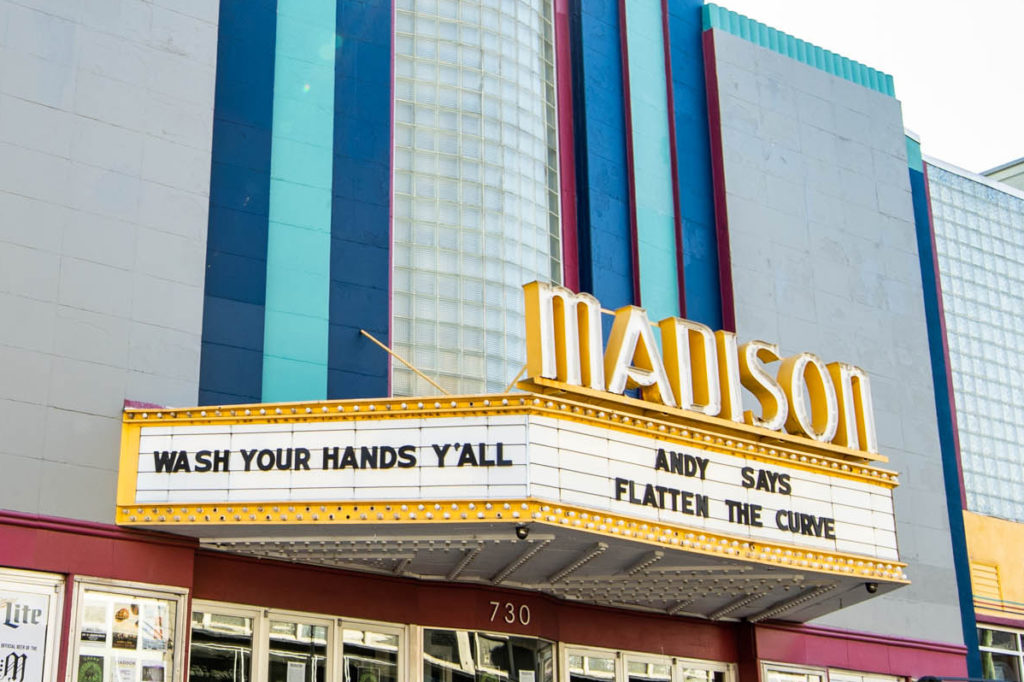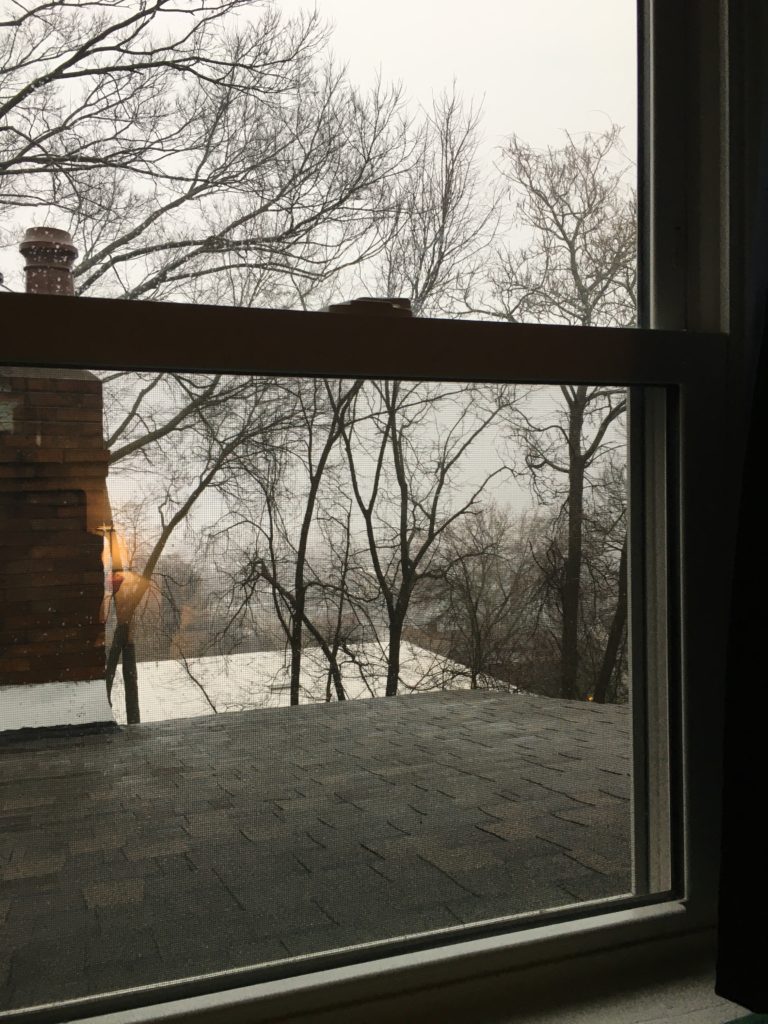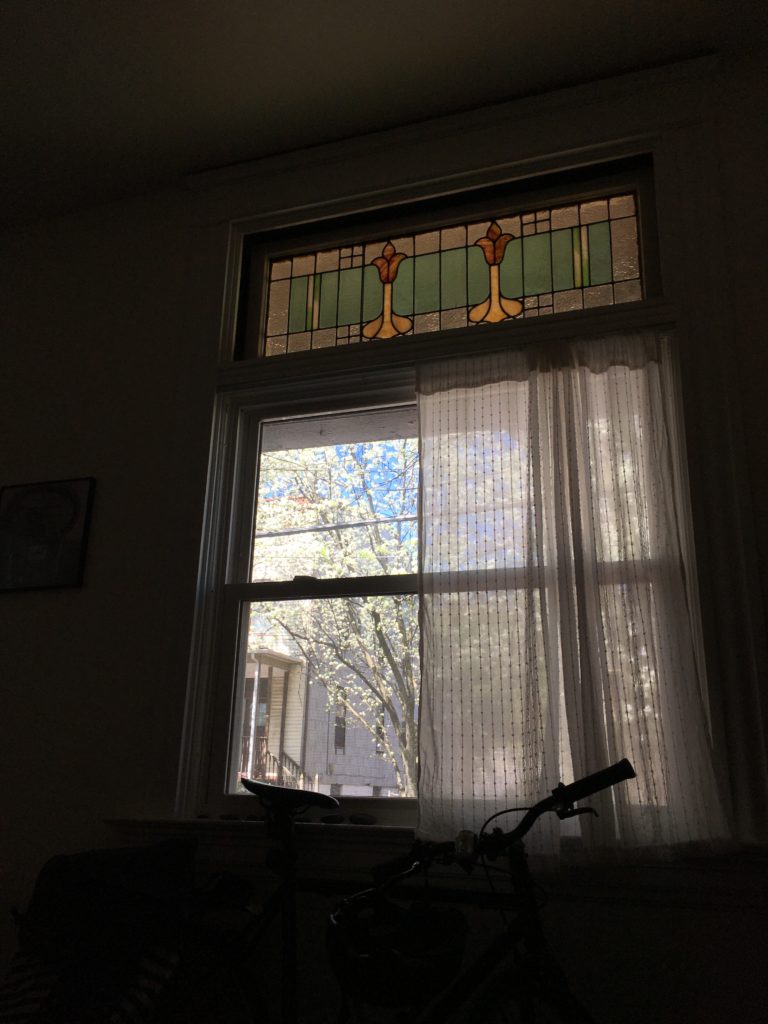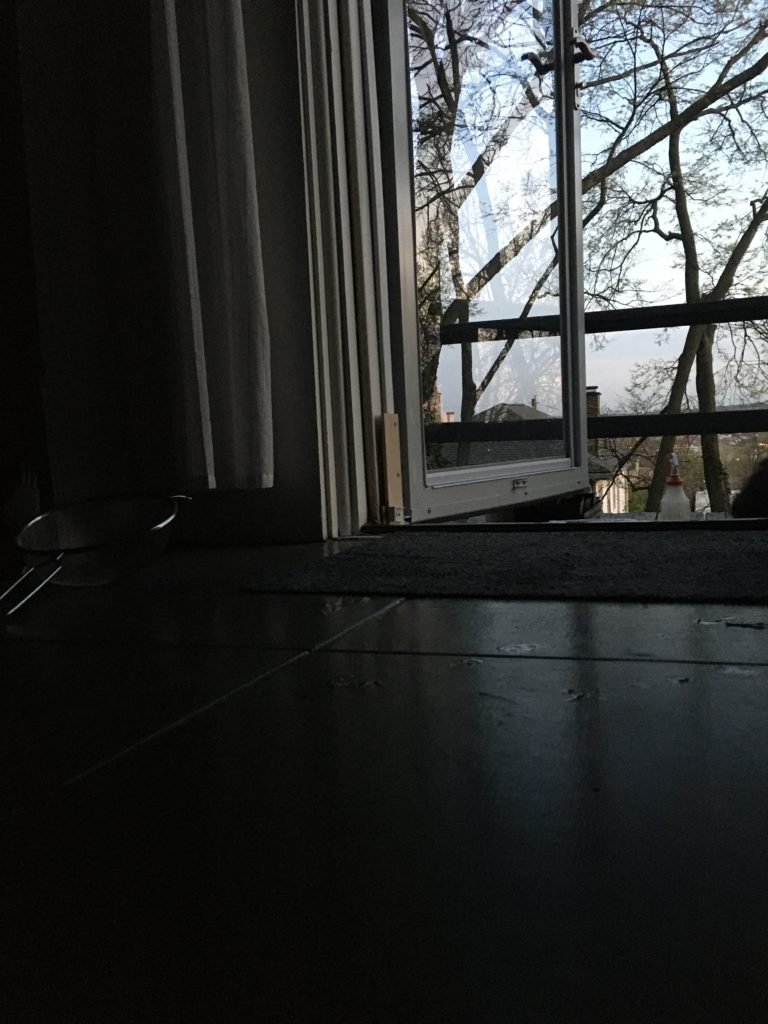A Long Intermission: Searching for Cinematic Moments During Covid-19
Posted on September 9, 2020
Whether it’s an increase in binge-watching or awareness of daily sights and sounds, the pandemic lockdown has permanently changed the way we, individually and collectively, relate to film—in ways we are still discovering.
While theater marquee lights remain dim—displaying words of wisdom rather than movie showtimes—many of us continue to experience meaningful cinematic moments outside of the traditional theater-going experience. The current pandemic has produced sweeping changes in how we consume media, altering what we watch and how we watch it. But at its core, film is a meditative medium that requires stillness. During this time of political and economic unrest, I have surprised myself and been able to channel this quietude to discover movie moments in my daily life. Though not a true substitute, these periphery experiences are just as valuable and interesting as the conventional movie-going moments we love and miss. From curating a Friday night binge-watching session, to looking out your window, the current intermission from the norm that we’re taking provides a unique space for reflection on the ways we can connect with the cinematic medium when theaters are closed and collective viewing is limited.
By late March, the Covid-19 lockdown was in full effect, and streaming television shows and movies felt like a collective coping mechanism. When talking with friends and family, conversations would inevitably lead to What are you watching? Everyone became their own curator, navigating between various streaming platforms, depending on mood, access, and content. This is a new age of collective comfort and binge-watching for many; including the millions that watched Tiger King, which helped pass the time as well as provide much needed levity and escape from the ongoing public health crisis. Although I confess I did not watch Tiger King, opting instead to savor Michael Jordan’s The Last Dance, I devoured countless films and television shows, from classics like Casablanca to cake decorating videos on Instagram.
I am grateful for media arts organizations, like the Ann Arbor Film Festival, who swiftly adapted to the new landscape, providing innovative virtual viewing experiences using video conferencing platforms to engage with viewers, rising to the adage that “the show must go on” after devastating event cancellations. And who could have guessed the drive-in would make such a heroic, summer-saving comeback? As the days turned to months, the ubiquity of streaming became so popular that even horoscope.com added a “streaming” section for film and television recommendations based on your astrological sign. (This Virgo was advised to watch the romantic teen drama Love, Victor to “leave my heart buzzing.”)
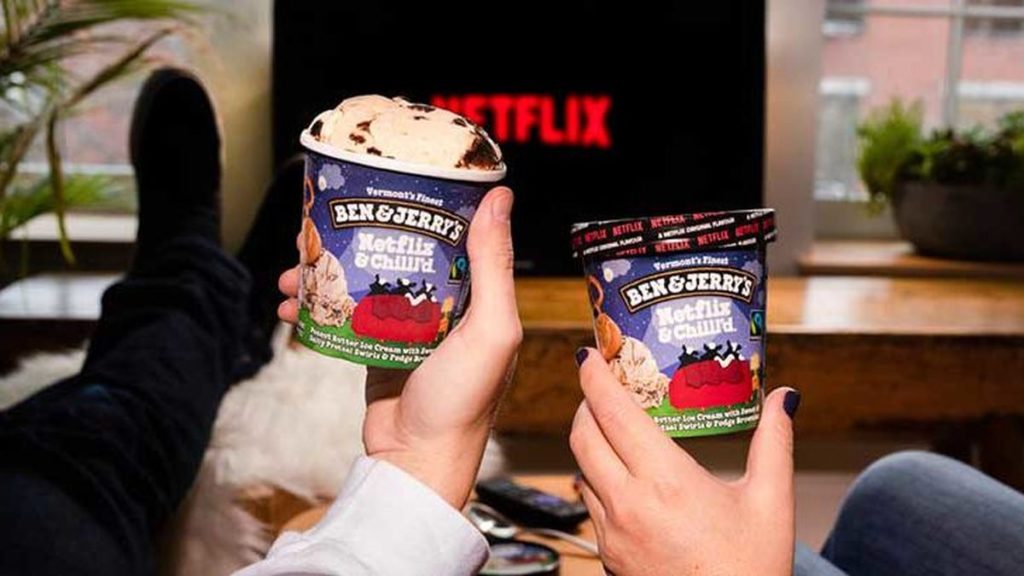
The January release of Ben & Jerry’s new ice cream flavor Netflix & Chilll’d™ further cemented the lexicon of binge watching into the cultural (and culinary) canon. It felt like confirmation, albeit from an unlikely source, that thanks to the impact of Covid-19, streaming will, for better or worse, continue to alter the film industry’s production and distribution methods—likely in an expedited way. Online viewing, in the eyes of many in the film industry, threatens the future of traditional film exhibition. Nonetheless, during this time of isolation, streaming has truly felt like a lifeline.
During lockdown, the screened windows of my home became yet another viewfinder into the world, as I peered down the block curious to know how my immediate community was holding up, all the while developing complicated fictional plots and fantastical back stories about each neighbor. When stillness and isolation felt too suffocating, I drove aimlessly around the city to remember what movement felt like, reinstating my belief that driving is just one long continuous tracking shot, akin to watching a movie in real time through a widescreen windshield.
Now that the world is not in intensive lockdown, my sense of freedom has been somewhat restored, but I still enjoy a drive to make up for cancelled flights and summer road trip plans. Working remotely necessitates another type of framing, the video conferencing square that cinematically encloses you (the star), in front of your domestic backdrop. We have become our own set decorators and prop masters, arranging makeshift workspaces to be functional yet stylish, hiding any behind-the-scenes disasters with careful rigging and camouflage. We have taken on new roles: as computer technician, sound engineer, lighting designer, makeup artist, and wardrobe stylist—understanding that while brushing your teeth may not be necessary, wearing pants is. All ages and demographics have learned to navigate different software interfaces, the intricacies of inputs and outputs, and developed an understanding of WiFi signal sensitivities to avoid frozen screens. Everyone is getting a crash course in video production, even if proper technique and vernacular evade us.
Months of domestic isolation have also nurtured acoustic sensitivity. To sit and listen to the whirl of a fan, the drone of a refrigerator, and the buzz of street traffic can be a fascinating exercise in observation. The soundtrack of our lives exists in the keyboard chatter from our computers, the neighbor’s loud radio, or the coo of a mourning dove—a sign from the universe that everything will eventually be OK. Whether chatting on the phone or listening to the radio, the human voice can provide immense comfort and combat loneliness. To me, podcasts have been a savior, and they feel like an epic voiceover to the movie you are currently living in, creating an intimate and intellectual space to laugh, listen, and learn. And, of course, music has the power to make any moment feel instantly cinematic. The work of composers Gustavo Santaolalla or Max Richter can transform a simple bath into an introspective moment of reflection and self care just like blasting rock ’n’ roll favorites while driving on back country roads makes the world feel somewhat normal again, if only for the length of a song.
When I desperately miss the movies, I rely on nostalgia to recollect favorite movie moments, like a highlight reel playing out in my mind. As the daughter of a cinephile, a former film student, and the director of a microcinema, I have watched hundreds, if not thousands, of films. I believe the power of film-going is based not only on content, environment, and audience engagement, but also the internal experience you have in that moment. I like to think about the time in early January when I trekked to the multiplex across the river to see Terrence Malick’s latest film A Hidden Life (2019). It was a late show, 10 p.m., and the very last screening of the film in the region. With only three or four other folks in the theater, I reclined back feeling utterly exhausted. The quiet story of an Austrian farmer who refused to express allegiance for the Nazis slowly unfolded over three hours. Together, the scale of the projection, the colors and texture of the picture, and the sound of the music created a cathartic experience that left a lasting impression.
I needed this moment as a reminder that small gestures can have great impact. I needed this moment to reestablish my belief that cinema was my life’s passion and work. After an exhausting year, that moment represented a change, shift, and new chapter in my life, functioning as a reminder that the choices in our lives, however big or small, can represent larger belief systems and ethical ideals. It was a reminder of the medium’s storytelling capabilities as a unifying tool for political action and social justice. I left the theater at 1 a.m. in a teary daze, transformed by this powerful cinematic experience. I often relive this moment in my mind, connecting to the film and its story, but also to how it made me feel—helping to make a little bit more sense of my life at the moment and the world around me, while also reinforcing my desire to keep making films, supporting makers, and exposing audiences to important stories, perspectives, and voices.
Although no one can predict exactly when theaters will re-open to pre-pandemic capacity, it is my hope that this current interlude provides insight into all the ways we can connect to cinematic moments outside of traditional means. Until the theater marquee shines again, we can search for cinema in our daily lives, find our own soundtrack, curate our own matinee, or spend the afternoon reminiscing about the films we loved as children. And we might just be surprised by what we can discover during this very long intermission.
